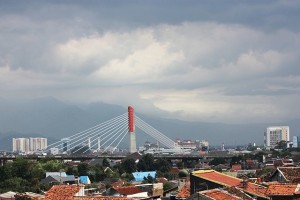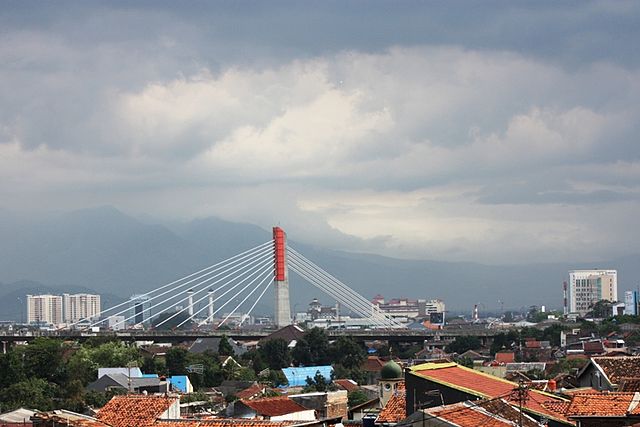 Indonesia has garnered a “broadly positive” outlook for the near term from the International Monetary Fund (IMF) for putting a new emphasis on competitiveness-driven growth.
Indonesia has garnered a “broadly positive” outlook for the near term from the International Monetary Fund (IMF) for putting a new emphasis on competitiveness-driven growth.
IMF forecasts that Indonesia will post a growth of around 5¼ percent this year despite soft demand for commodity exports and global uncertainties.
In their annual assessment of the state of Indonesia’s economy, IMF economists said the Southeast Asian nation has taken significant steps over the past 18 months to improve its policy credibility, resiliency to shocks, and exchange rate flexibility.
The IMF also noted how Indonesia has taken strong policy actions in the face of an end to quantitative easing by the U.S. Federal Reserve and headwinds posed by falling commodity prices.
The country’s macroeconomic fundamentals and reserve buffers have also been strengthened through a clearer policy framework and better policy coordination, it added.
Markets have responded favorably, noted the report, as evidenced by large portfolio inflows in 2014, supported by global push factors.
Moreover, the organization said Indonesian policymakers, following the 2014 Article IV consultation, which concluded in March, are pushing for a faster transition to a new growth model that emphasizes more competitiveness-driven growth rather than its current commodity-supported growth.
This as contribution of the commodity sector to GDP has declined by around five percentage points over the past five years, with demand slowing in several important markets, notably China.
More recently, manufacturing exports have emerged as a bright spot, supported by foreign direct investment and the rupiah’s adjustment.
With the shift to the new model, complemented by more infrastructure investment and a stable macroeconomic setting, the government expects growth to rise to 6 percent by 2018.
To achieve this target, it has sought to ease longstanding supply bottlenecks, with the new government deciding in October 2014 to remove most fuel subsidies so as to increase the budget for social and infrastructure spending, said the report.
But given the global outlook and the presence of external risks, more needs to be done to develop new growth drivers, said the report’s authors.
Among these risks include a possible deeper-than-expected slowdown in emerging market trading partners and surges in global financial market volatility.
“These risks could exacerbate potential vulnerabilities in the banking and corporate sectors. Slower or narrower reforms than envisaged in the report’s current baseline might also affect the pace of growth,” said the report.
To support growth and ensure stability, the IMF urged more structural reforms. “The aim should be to ease supply bottlenecks and improve the investment climate, with a view to expanding the export base,” said the report.
It also suggested focusing on creating a stable trade and investment regime, supporting human resource development and labor market flexibility, and financial market deepening.
Photo: Prayudi Setiadharma





